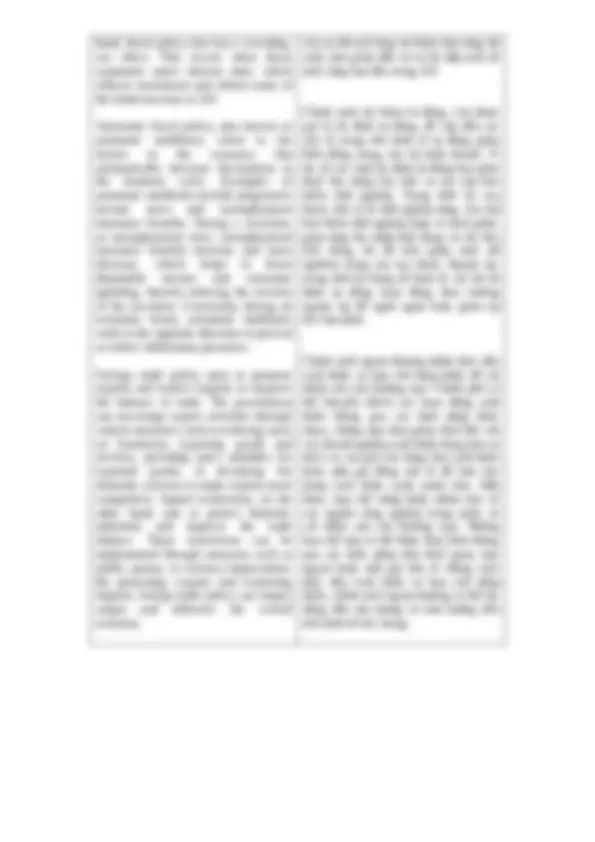



Study with the several resources on Docsity

Earn points by helping other students or get them with a premium plan


Prepare for your exams
Study with the several resources on Docsity

Earn points to download
Earn points by helping other students or get them with a premium plan
Community
Ask the community for help and clear up your study doubts
Discover the best universities in your country according to Docsity users
Free resources
Download our free guides on studying techniques, anxiety management strategies, and thesis advice from Docsity tutors
GENERAL INTRODUCTION OF MACROECONOMICS
Typology: Summaries
1 / 2

This page cannot be seen from the preview
Don't miss anything!


Fiscal policy refers to the use of government spending (G) and taxation (T) to influence the overall economy. It is a tool used by the government to stabilize the economy, promote economic growth, and control inflation. There are two main types of fiscal policy: expansionary fiscal policy and contractionary fiscal policy. Expansionary fiscal policy involves increasing government spending and/or decreasing taxes. This type of policy is typically used to combat a recession or economic downturn. By increasing government spending, such as on infrastructure projects or public services, or by reducing taxes, individuals and businesses have more money to spend and invest, which stimulates aggregate demand (AD) and boosts economic activity. Contractionary fiscal policy, on the other hand, involves decreasing government spending and/or increasing taxes. This type of policy is used to control inflation or prevent an overheating economy. By reducing government spending or increasing taxes, there is less money available for consumption and investment, which helps to reduce AD and curb inflationary pressures. Fiscal policy directly affects aggregate demand. Expansionary fiscal policy, through increased government spending or tax cuts, shifts the AD curve to the right, increasing output and employment. Conversely, contractionary fiscal policy, through decreased government spending or tax increases, shifts the AD curve to the left, decreasing output and employment. Fiscal policy has two main effects on AD. The multiplier effect refers to the additional shifts in AD that result from fiscal policy increasing income and, in turn, increasing consumer spending. When the government increases spending or reduces taxes, it stimulates economic activity, leading to a multiplier effect on AD. On the other Chính sách tài khóa đề cập đến việc sử dụng chi tiêu của chính phủ (G) và thuế (T) để ảnh hưởng đến nền kinh tế nói chung. Nó là một công cụ được chính phủ sử dụng để ổn định nền kinh tế, thúc đẩy tăng trưởng kinh tế và kiểm soát lạm phát. Có hai loại chính sách tài khóa chính: chính sách tài khóa mở rộng và chính sách tài khóa thu hẹp. Chính sách tài khóa mở rộng liên quan đến việc tăng chi tiêu của chính phủ và / hoặc giảm thuế. Loại chính sách này thường được sử dụng để chống lại suy thoái kinh tế hoặc suy thoái kinh tế. Bằng cách tăng chi tiêu của chính phủ, chẳng hạn như cho các dự án cơ sở hạ tầng hoặc dịch vụ công cộng, hoặc bằng cách giảm thuế, các cá nhân và doanh nghiệp có nhiều tiền hơn để chi tiêu và đầu tư, kích thích tổng cầu (AD) và thúc đẩy hoạt động kinh tế. Mặt khác, chính sách tài khóa thu hẹp liên quan đến việc giảm chi tiêu của chính phủ và / hoặc tăng thuế. Loại chính sách này được sử dụng để kiểm soát lạm phát hoặc ngăn chặn nền kinh tế quá nóng. Bằng cách giảm chi tiêu chính phủ hoặc tăng thuế, có ít tiền hơn cho tiêu dùng và đầu tư, giúp giảm AD và kiềm chế áp lực lạm phát. Chính sách tài khóa ảnh hưởng trực tiếp đến tổng cầu. Chính sách tài khóa mở rộng, thông qua tăng chi tiêu chính phủ hoặc cắt giảm thuế, chuyển đường cong AD sang phải, tăng sản lượng và việc làm. Ngược lại, chính sách tài khóa thu hẹp, thông qua giảm chi tiêu chính phủ hoặc tăng thuế, dịch chuyển đường cong AD sang trái, giảm sản lượng và việc làm. Chính sách tài khóa có hai tác động chính đến AD. Hiệu ứng cấp số nhân đề cập đến những thay đổi bổ sung trong AD do chính sách tài khóa tăng thu nhập và đến lượt nó, tăng chi tiêu của người tiêu dùng. Khi chính phủ tăng chi tiêu hoặc giảm thuế, nó kích thích hoạt động kinh tế, dẫn đến hiệu ứng cấp số nhân đối với AD. Mặt khác, chính sách tài khóa cũng có tác dụng lấn át. Điều này
hand, fiscal policy also has a crowding- out effect. This occurs when fiscal expansion raises interest rates, which reduces investment and offsets some of the initial increase in AD. Automatic fiscal policy, also known as automatic stabilizers, refers to the factors in the economy that automatically decrease fluctuations in the business cycle. Examples of automatic stabilizers include progressive income taxes and unemployment insurance benefits. During a recession, as unemployment rises, unemployment insurance benefits increase, and taxes decrease, which helps to boost disposable income and consumer spending, thereby reducing the severity of the recession. Conversely, during an economic boom, automatic stabilizers work in the opposite direction to prevent or reduce inflationary pressures. Foreign trade policy aims to promote exports and restrict imports to improve the balance of trade. The government can encourage export activities through various measures, such as reducing taxes on businesses exporting goods and services, providing price subsidies for exported goods, or devaluing the domestic currency to make exports more competitive. Import restrictions, on the other hand, aim to protect domestic industries and improve the trade balance. These restrictions can be implemented through measures such as tariffs, quotas, or currency depreciation. By promoting exports and restricting imports, foreign trade policy can impact output and influence the overall economy. xảy ra khi mở rộng tài khóa làm tăng lãi suất, làm giảm đầu tư và bù đắp một số mức tăng ban đầu trong AD. Chính sách tài khóa tự động, còn được gọi là ổn định tự động, đề cập đến các yếu tố trong nền kinh tế tự động giảm biến động trong chu kỳ kinh doanh. Ví dụ về các chất ổn định tự động bao gồm thuế thu nhập lũy tiến và trợ cấp bảo hiểm thất nghiệp. Trong thời kỳ suy thoái, khi tỷ lệ thất nghiệp tăng, trợ cấp bảo hiểm thất nghiệp tăng và thuế giảm, giúp tăng thu nhập khả dụng và chi tiêu tiêu dùng, do đó làm giảm mức độ nghiêm trọng của suy thoái. Ngược lại, trong thời kỳ bùng nổ kinh tế, các bộ ổn định tự động hoạt động theo hướng ngược lại để ngăn ngừa hoặc giảm áp lực lạm phát. Chính sách ngoại thương nhằm thúc đẩy xuất khẩu và hạn chế nhập khẩu để cải thiện cán cân thương mại. Chính phủ có thể khuyến khích các hoạt động xuất khẩu thông qua các biện pháp khác nhau, chẳng hạn như giảm thuế đối với các doanh nghiệp xuất khẩu hàng hóa và dịch vụ, trợ giá cho hàng hóa xuất khẩu hoặc phá giá đồng nội tệ để làm cho hàng xuất khẩu cạnh tranh hơn. Mặt khác, hạn chế nhập khẩu nhằm bảo vệ các ngành công nghiệp trong nước và cải thiện cán cân thương mại. Những hạn chế này có thể được thực hiện thông qua các biện pháp như thuế quan, hạn ngạch hoặc mất giá tiền tệ. Bằng cách thúc đẩy xuất khẩu và hạn chế nhập khẩu, chính sách ngoại thương có thể tác động đến sản lượng và ảnh hưởng đến nền kinh tế nói chung.